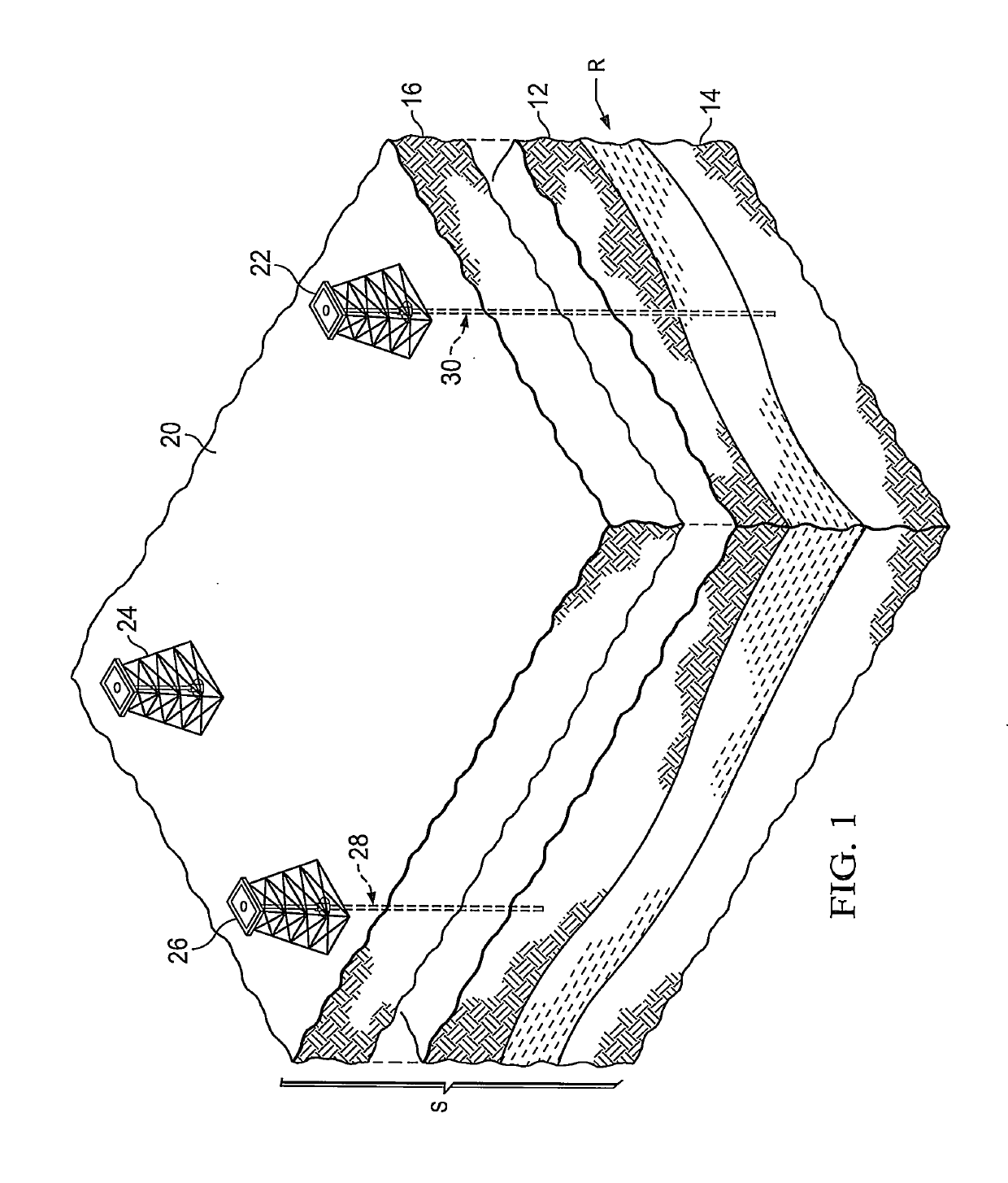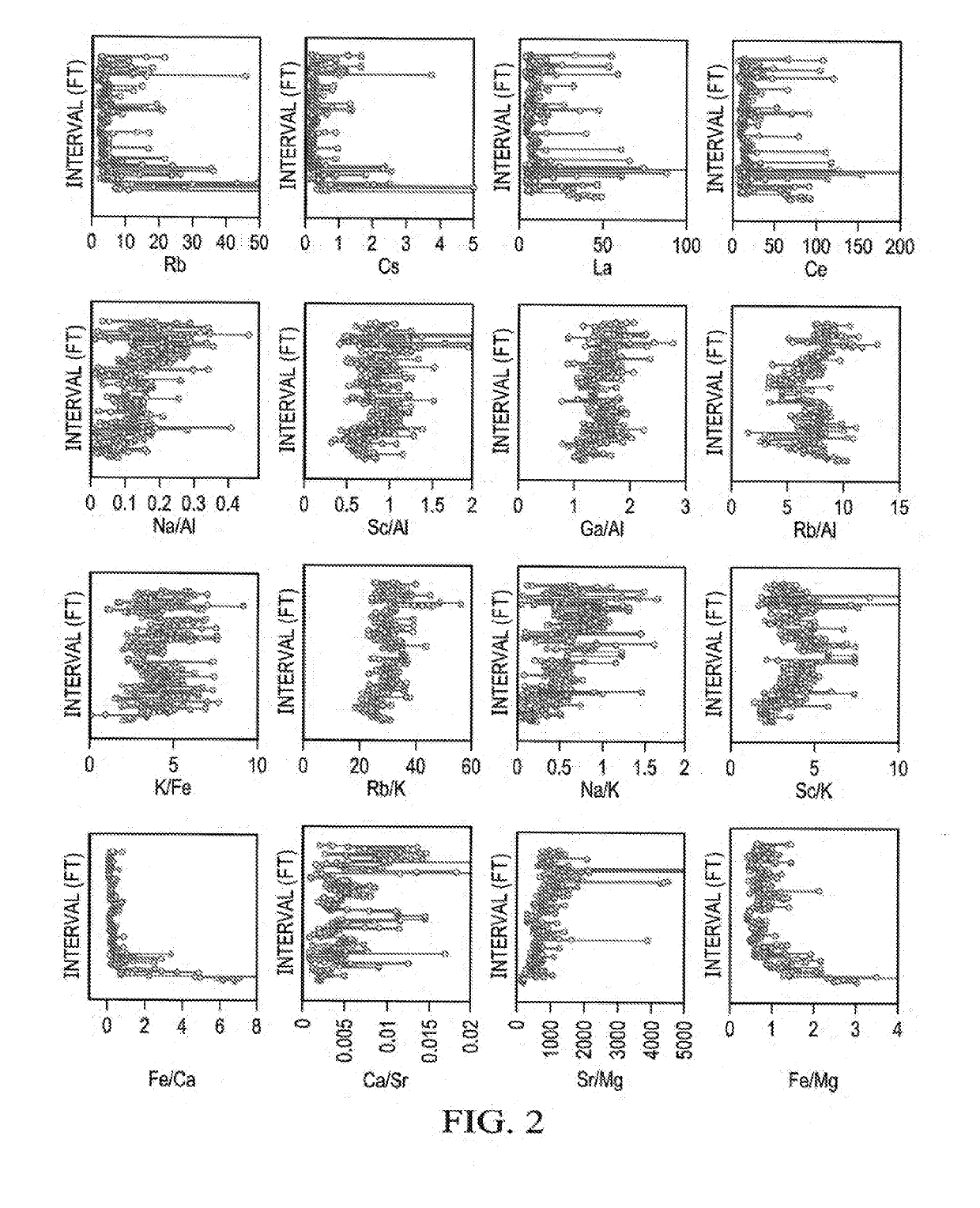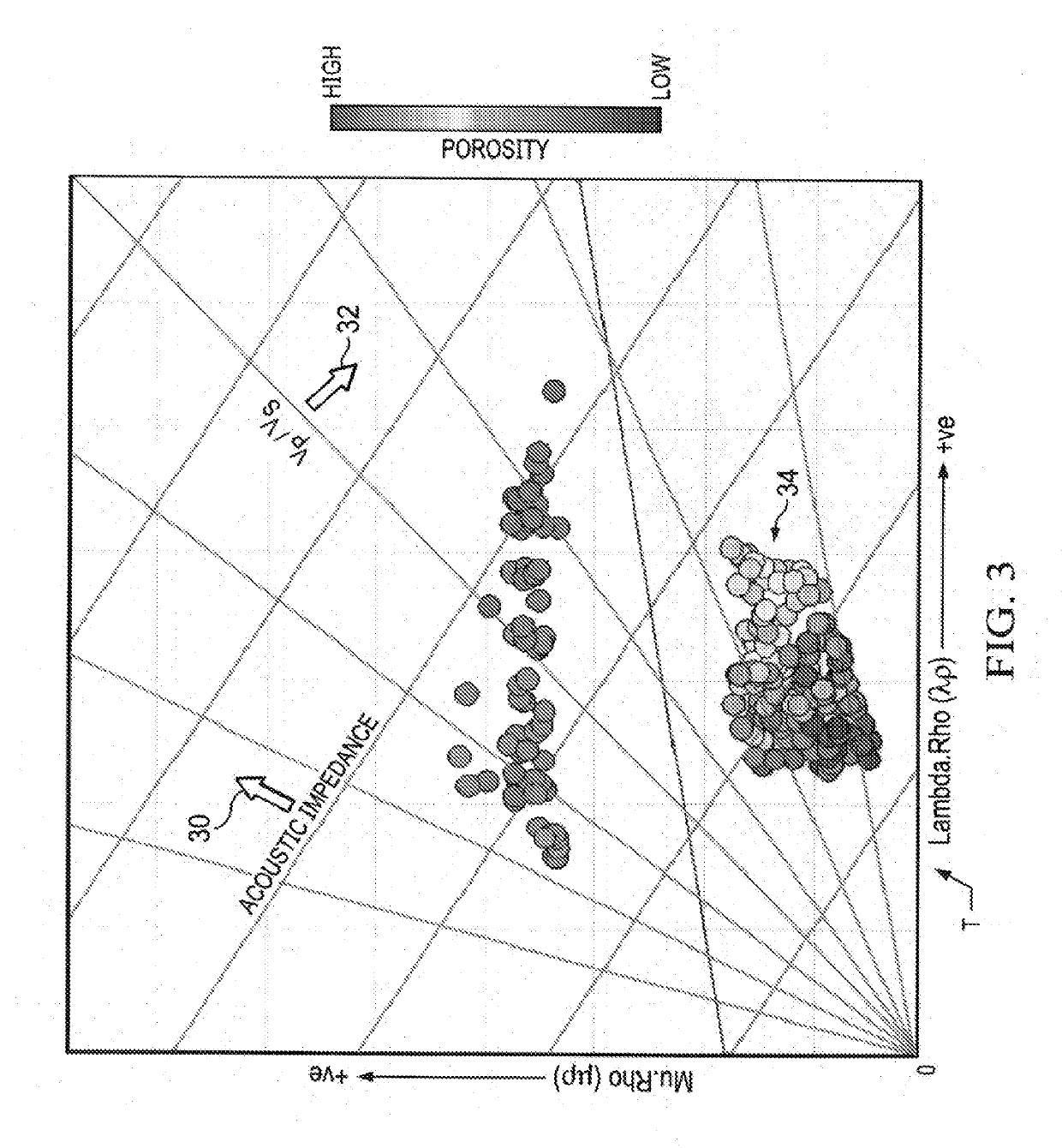Mapping chemostratigraphic signatures of a reservoir with rock physics and seismic inversion
a reservoir and seismic inversion technology, applied in seismology for waterlogging, well accessories, boreholes/well accessories, etc., can solve the problems of limiting the direct knowledge of rock facies and permeability at reservoir locations away from well boreholes, and limiting the direct knowledge of rock facies and permeability at reservoir locations
- Summary
- Abstract
- Description
- Claims
- Application Information
AI Technical Summary
Benefits of technology
Problems solved by technology
Method used
Image
Examples
Embodiment Construction
[0020]In the drawings, FIG. 1 is an isometric view in schematic form of a subsurface geological structure S or formations in the earth at a location where a subsurface hydrocarbon reservoir R in the form of a hydrocarbon producing formation rock layer is present. As shown in FIG. 1, the hydrocarbon producing formation rock layer is present beneath several other formation rock layers, such as indicated at 12 and 16 below the earth surface 20, and above a rock layer 14. As indicated at 22, 24 and 26, exploratory or production wells have been drilled to penetrate the earth formations through wellbores as indicated at 28 and 30.
[0021]As has been set forth, knowledge of facies and properties of formation rock in situ beneath the surface of the earth is available from core samples extracted from walls of the formations adjacent to well boreholes. Knowledge of facies and properties of formation rock is also available from measurements obtained with wireline well logging tools lowered throu...
PUM
 Login to View More
Login to View More Abstract
Description
Claims
Application Information
 Login to View More
Login to View More - R&D
- Intellectual Property
- Life Sciences
- Materials
- Tech Scout
- Unparalleled Data Quality
- Higher Quality Content
- 60% Fewer Hallucinations
Browse by: Latest US Patents, China's latest patents, Technical Efficacy Thesaurus, Application Domain, Technology Topic, Popular Technical Reports.
© 2025 PatSnap. All rights reserved.Legal|Privacy policy|Modern Slavery Act Transparency Statement|Sitemap|About US| Contact US: help@patsnap.com



